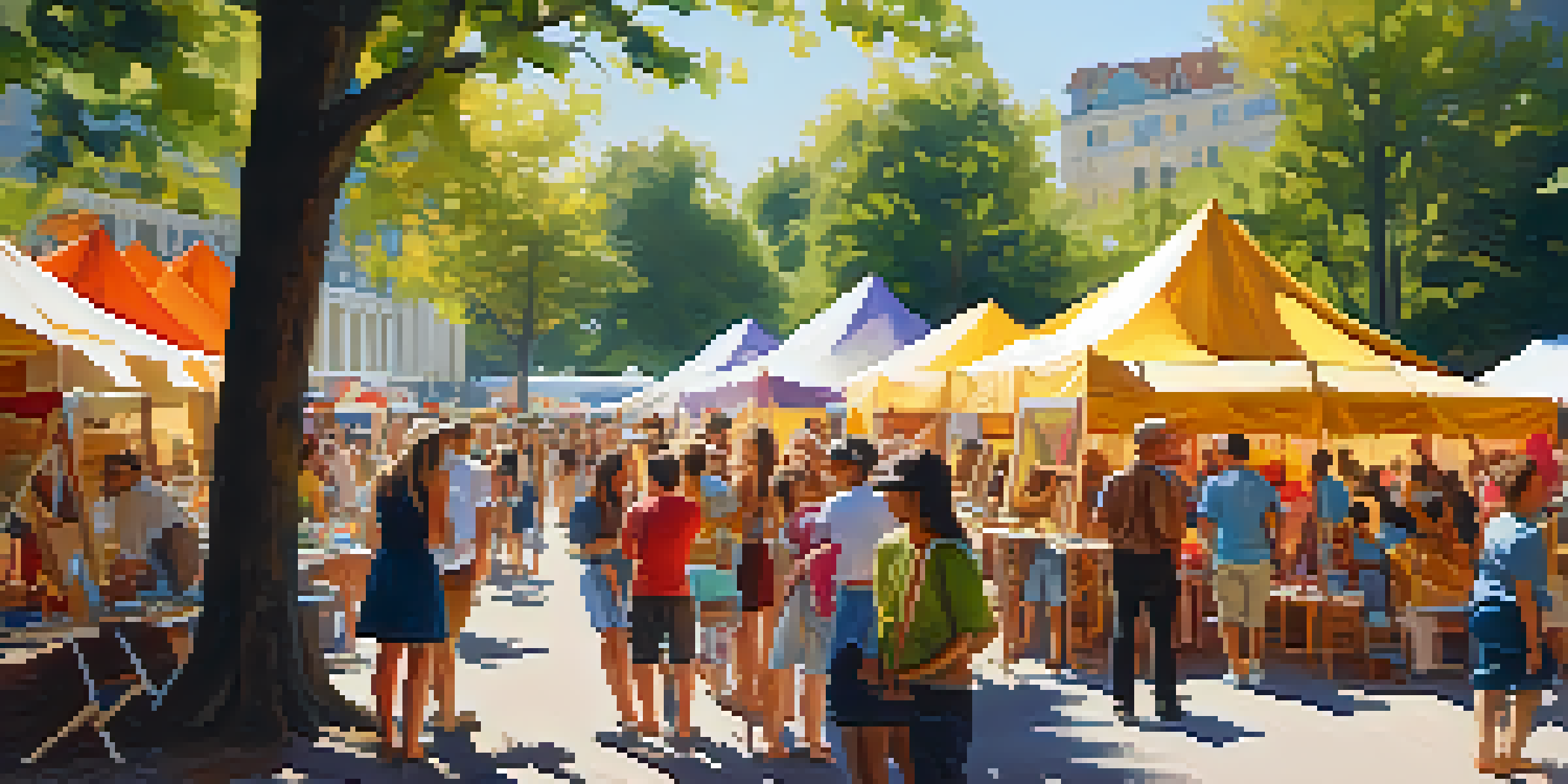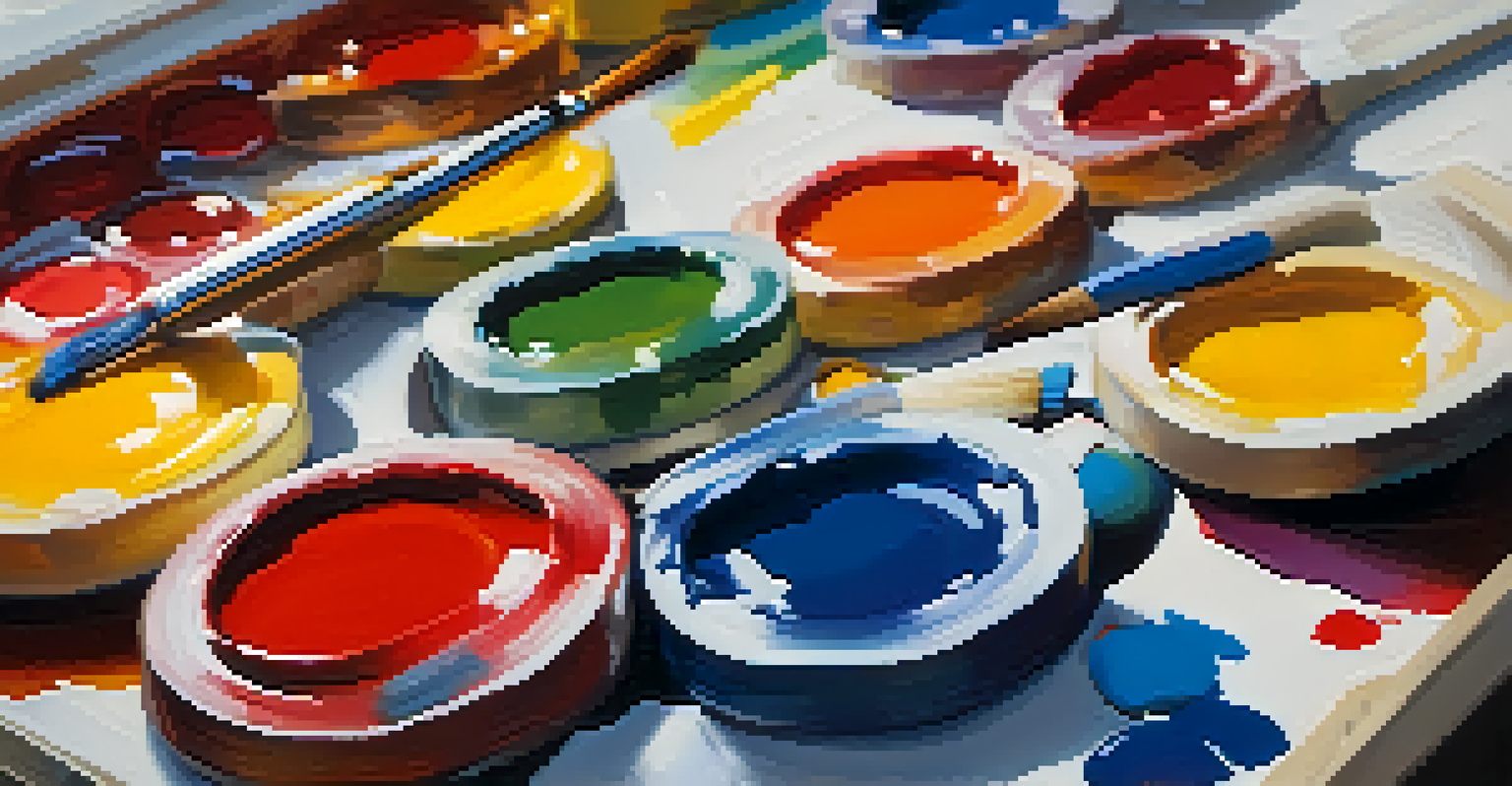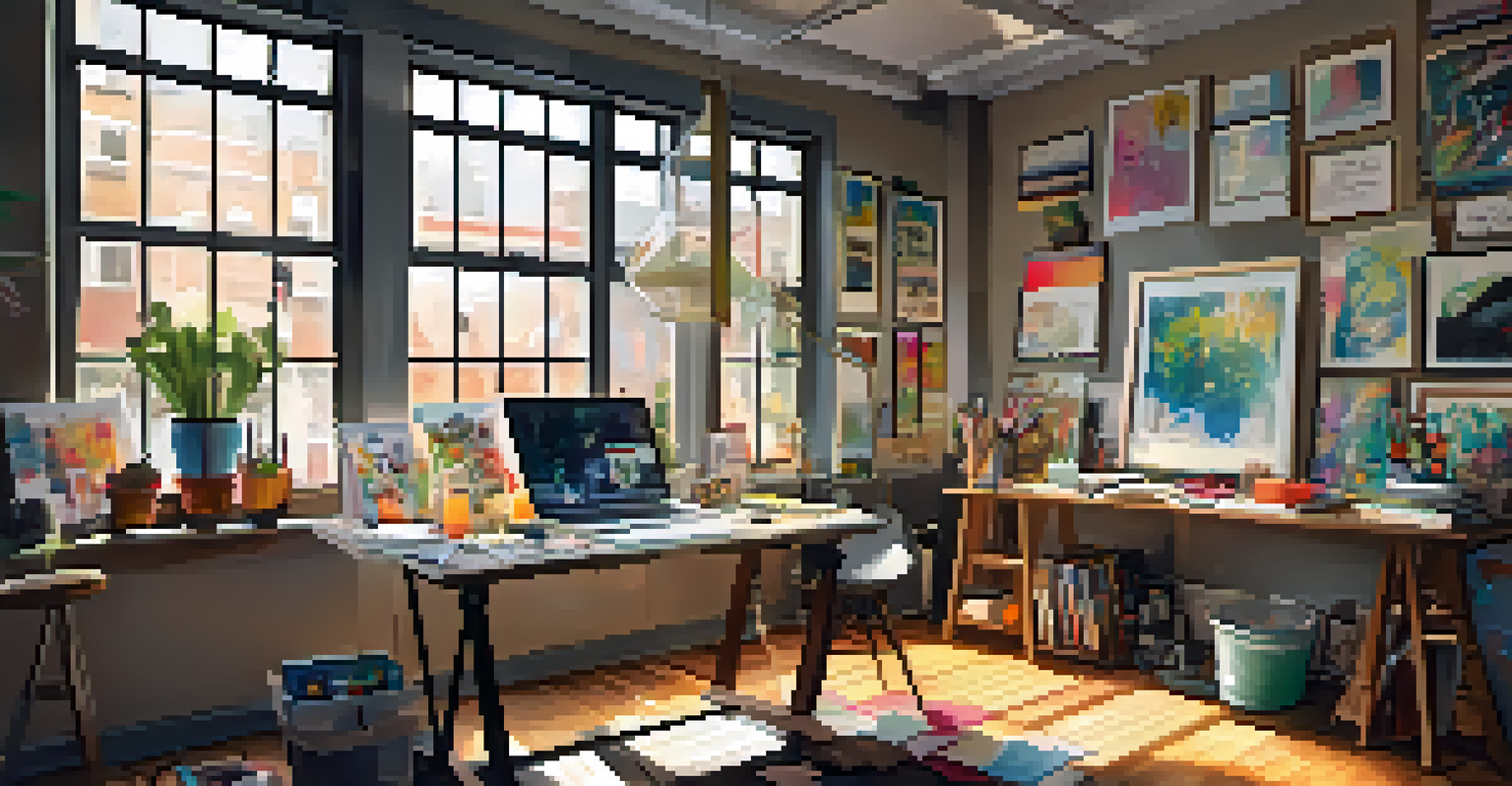The Impact of Social Media on Painting Trends and Artists

The Rise of Social Media and Its Cultural Relevance
In the past decade, social media has transformed how we share and consume art. Platforms like Instagram and Pinterest have become virtual galleries, giving artists a space to showcase their work to a global audience. This shift has allowed art to transcend geographical boundaries, enabling diverse cultural influences to blend and evolve.
Art is the most beautiful of all lies; it is a form of truth that speaks to the heart.
Social media's instant nature means trends can emerge overnight. A unique painting style or technique can go viral, inspiring countless artists to adopt and adapt it. This rapid dissemination of ideas fosters a dynamic art scene where innovation thrives, yet it also challenges traditional notions of what art can be.
Moreover, social media has democratized art access, allowing anyone to engage with creative expression. Whether through viewing, sharing, or creating, users can actively participate in the art world. This participatory culture not only broadens the audience but also encourages artists to experiment and push boundaries.
How Trends Emerge and Spread Through Social Media
Trends in painting can now spread like wildfire, thanks to the interconnectedness of social media. One artist's post can inspire thousands, leading to trends that might not have gained traction in traditional spaces. For instance, the resurgence of abstract art and bold color palettes has been largely fueled by influencers sharing striking pieces on their feeds.

Hashtags play a crucial role in this trend cycle, allowing artists to categorize their work and reach specific audiences. A simple search can reveal a plethora of similar artworks, creating a sense of community and shared inspiration. This interconnectedness fosters a collaborative environment where artists can learn from one another and build upon existing trends.
Social Media Transforms Art Sharing
Platforms like Instagram and Pinterest have revolutionized how artists showcase their work, breaking geographical barriers and creating a global art community.
However, the fast-paced nature of social media can also lead to a saturation of styles. While some artists thrive in this environment, others may struggle to stand out. Finding the balance between embracing trends and maintaining a unique voice becomes essential for artists navigating this digital landscape.
Social Media as a Marketing Tool for Artists
For many contemporary artists, social media serves as a primary marketing tool. It's not just about showcasing their work; it's also about building a brand and connecting with potential buyers. Artists can engage directly with their audience, offering insights into their creative process and personal stories behind their pieces, which helps create a deeper connection.
Social media is not just a tool; it's a platform for artists to express themselves and connect with the world.
Platforms like Instagram allow for targeted advertising, enabling artists to reach specific demographics interested in art. This means that a painter can showcase their work to people who are most likely to appreciate and purchase it. Instead of relying solely on galleries or exhibitions, artists now have more control over their visibility and sales.
Furthermore, social media creates opportunities for collaboration and commissions. Artists can network with brands, galleries, and other creators, leading to partnerships that can enhance their visibility and credibility in the art world. This shift has empowered many artists to take charge of their careers in ways that were previously unimaginable.
The Role of Influencers in Shaping Painting Trends
Influencers have become key players in the art world, often dictating trends and styles through their massive followings. When an influencer shares a painting or endorses an artist, it can significantly boost that artist's visibility and sales. This phenomenon highlights how powerful social media can be in shaping public perception of art.
These influencers often curate their feeds to showcase specific aesthetics, which can lead to a homogenization of styles as artists strive to align with popular trends. While this can be beneficial for gaining exposure, it can also stifle originality and creativity among emerging artists who feel pressured to conform.
Trends Emerge and Evolve Quickly
The rapid spread of trends through social media allows artists to innovate and adapt, but also challenges them to maintain their unique voice in a saturated market.
However, not all influencers promote the same styles, leading to a diverse range of aesthetics being celebrated. This multiplicity allows for various niches within the art community, fostering unique subcultures where artists can thrive. Ultimately, influencers play a dual role: they can elevate trends and also challenge artists to carve out their own distinctive paths.
Creating Community and Support Among Artists
Social media has cultivated a sense of community among artists, breaking down barriers that once existed in the art world. Online platforms allow artists to connect, share experiences, and offer feedback to one another. This camaraderie fosters a supportive environment where artists can grow and refine their craft.
Artists often participate in online challenges and collaborations, encouraging one another to push their creative boundaries. For example, the 'Inktober' challenge has brought together artists from across the globe, inspiring them to create and share their work in a month-long celebration of creativity. These initiatives not only boost morale but also enhance visibility.
Moreover, these online connections can lead to real-life collaborations and exhibitions. Artists who meet through social media often find opportunities to work together or showcase their art in collective exhibitions. This blending of digital and physical realms enriches the artistic experience and promotes a thriving art community.
Challenges Artists Face in the Social Media Landscape
Despite its many advantages, social media presents challenges for artists. The pressure to constantly produce and share content can lead to burnout, which may negatively impact creativity. Artists might find themselves caught in a cycle of chasing likes and followers rather than focusing on their authentic artistic journey.
Additionally, the fleeting nature of social media can make it difficult for artists to maintain a lasting impact. Trends come and go quickly, and what captures attention today may be forgotten tomorrow. This ephemerality can make it challenging for artists to build a sustainable career based solely on social media presence.
Community Support Among Artists
Social media fosters a sense of community where artists can connect, collaborate, and support each other's growth, enhancing their creative journeys.
Lastly, the comparison culture that social media fosters can affect artists' self-esteem and motivation. It's easy to fall into the trap of comparing one's work to others, leading to feelings of inadequacy. Finding a balance between engaging with the community and maintaining confidence in one's unique style becomes crucial for artists navigating this landscape.
The Future of Painting in the Age of Social Media
As social media continues to evolve, so too will its influence on painting trends and artists. New platforms and technologies, such as virtual reality and augmented reality, are emerging, potentially reshaping how art is created and experienced. This evolution promises to bring even more innovative possibilities for artists and audiences alike.
Moreover, the increasing emphasis on authenticity in social media content may lead to a shift in how trends are approached. Artists may prioritize personal expression over viral potential, fostering a more diverse and genuine art scene. This could result in a richer tapestry of artistic voices, celebrating individuality and creative exploration.

Ultimately, the intersection of social media and art will continue to be a dynamic space filled with opportunities and challenges. As artists adapt to this ever-changing landscape, their resilience and creativity will shape the future of painting in ways we can only begin to imagine.